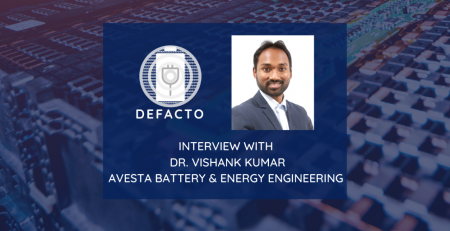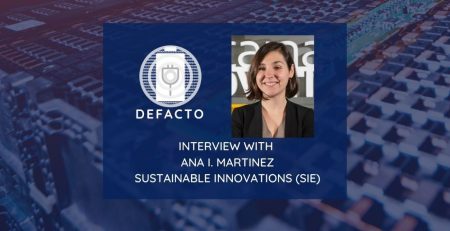“DEFACTO (…) will accelerate cell development and boost the market uptake of next generation of batteries, positioning Europe as the leader of this sector.” – Interview with CIDETEC Energy Storage.
Elixabete Ayerbe, from CIDETEC Energy Storage, speaks on this interview about their main role in the DEFACTO Project, their expectations and the work they will carry out as project coordinators.
Q: What is DEFACTO? What is the goal of the project?
A: DEFACTO stands for Battery DEsign and manuFACTuring Optimization through multiphysic modelling and it is a project funded by the European Commission within the framework of the Horizon2020 program. This project aims to understand the battery cell from multiscale and multiphysic perspectives. Precisely the cell behaviour will be studied starting from an atomistic level going up to the manufacturing process. To achieve this computational models and simulation tools based on data measured in the laboratory, pilot and production plants will be developed. As a result, the effects of the different production parameters and their interactions on the cell performance shall be described and better understood, and the information provided by the models and simulation shall result in an increase of the production’s overall efficiency, in a decrease of the time necessary to take an idea from its conception to the market and, consequently, in a reduction of the production process. This concept will be applied for the current G/NMC cell technology and it will be extended to generation 3b technologies (high capacity and high voltage cells with a high Ni-content and a low Co-content).
Q: What are your expectations from the project?
Thanks to the joint competencies of the consortium (code developers, cell characterization, and manufacturing and prototyping facilities) a solid project work plan allows the development and validation of these models for manufacturing and predicting cell properties and understanding on ageing mechanisms. In this way, the project aims to demonstrate the model-based cell development and manufacturing steps can be substantially improved by reducing trial-error experiments and enhancing mechanisms understanding.
CIDETEC Energy Storage is also a key partner in the development of an efficient time-adaptive reduced p4D (pseudo four-dimensional) model combining electrochemical, thermal and mechanical ageing to be used in global optimization. Thus, the DEFACTO p4D model can help reducing both computational and experimental costs taking into account the wide number of interactions between different variables in a complex system such as a Li-ion cell.
Q: Can you talk a bit about the work you are doing on coordinating the project? What are the biggest challenges? And the greatest outcomes?
A: Within the project we lead the implementation of DEFACTO’s activities to ensure project’s execution quality and timely delivery of all objectives, milestones and deliverables through ongoing monitoring and evaluation. Furthermore, we are also responsible for providing administrative, financial, and scientific management as well as enabling efficient communication between all partners. As coordinator of the project, CIDETEC Energy Storage will facilitate the interaction and cooperation with other EU-funded projects such as the initiatives Battery2030+, BIG-MAP and LiPLANET to better outline the requirements and boundary conditions for 3b and 4 Gen Li-ion cell manufacturing processes.
The biggest scientific challenge in characterizing and modelling such Li-Ion battery systems is the multiscale and multidomain aspects at the cell manufacturing level. This collaborative approach will involve the active participation of partners from the whole battery value chain ensuring that the project outcomes will overcome all major barriers for adoption and use. The resulting simulation tools will predict optimized cell design and cell manufacturing parameters which will be validated by prototyping and manufacturing data of advanced generation 3b cells chemistries to iterate and improve the models.












Leave a Reply